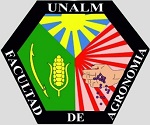Antifungal activity of five chemical and two biological fungicides for the management of Botrytis cinerea, causal agent of Gray Mold in Strawberry
DOI:
https://doi.org/10.21704/pja.v2i1.1126Keywords:
Botrytis cinerea, Gray mold, Fragaria x annanasa, fungicides, strawberryAbstract
Gray mold, caused by Botrytis cinerea, is one of the most important plant diseases in Strawberry in Peru. Because of its high variability and its pathogenic characteristics, proper fungicides use is essential to control this disease. The aim of this study was to evaluate the effect of five chemical fungicides: Tryfloxistrobin (0.0625%), Pyrimethanil + Fluopyram (0.1%), Pyrimethanil (0.1%), Fenhexamid (0.135%) and Carbendazim (0.125%), and two biological fungicides: Bacillus subtilis QST713 (0.75%) and Bacillus pumilus QST2808 (0.75%) in laboratory and field conditions. In the laboratory phase, the inhibition of mycelial growth was measured by evaluating diameter growth at 4 DAI (p≤0.05). Furthermore, conidial germination inhibition was evaluated in two different ways. First, one hundred conidia were placed in sterile water with fungicide and evaluated at 24 HAI (p≤0.05). Second, the number of CFUs was counted in poisoned PDA medium at 3 DDI. The doses 1x106 and 125 conidia/mL were used for each test respectively. The field experiment was in Aucallama, Huaral. Chemical and biological fungicides were sprayed in a strawberry cultivar Aromas. Twelve harvests were done. The results showed that chemical fungicides; Trifloxystrobin, Pyrimethanil + Fluopyram, Pyrimethanil, Fenhexamid and the biological fungicide Bacillus subtilis QST713 had considerable activity against Botrytis cinerea in most of the variables assessed. These results will contribute to the evaluation of the potential of each one of these fungicides for the management of Botrytis cinerea.
Downloads
References
Álvarez, T. (2013). Biocontrol de Botrytis cinerea a partir de extractos fenólicos de Fresa. Thesis to opt for the degree of Maestro en Ciencia en Producción Agrícola Sustentable, Instituto Politécnico Nacional, México. http://repositoriodigital.ipn.mx/handle/123456789/16418
Bay, I., Eynard, J. and Gubler, W. (2010). Evaluation of fungicide programs for management of Botrytis bunch rot of grapes: 2010 field trial. [on line] California: University of California, Davis. Retrieved from: https://escholarship.org/uc/item/8gs9k471 [2017, march 12]
Benito, E.P.; M. Arranz and A. Eslava. (2000). Factores de patogenicidad de Botrytis cinerea. Revista Iberoamericana de Micología 17, S43-S46.
Cano, A. (2013). Estrategias biológicas para el manejo de enfermedades en el cultivo de fresa (Fragaria spp). Revista Colombiana de Ciencias Hortícolas, 7(2), 263-276.
Chaves, N. and Wang, A. (2004). Combate del Moho gris (Botrytis cinerea) de la Fresa mediante Gliocladium roseum. Agronomía Costarricense, 28(2), 73-85.
Elad, Y., Williamsom, B., Tudzynski, P. and Denle, N. (2007). Botrytis: Biology, pathology and control. Dordretcht, The Netherlands: Ed. Springer.
Espinosa, M. (2006). Estudio de la variabilidad genética y organización cromosómica en el hongo fitopatógeno Botrytis cinerea. Thesis to opt for the degree of Doctor. Universidad de Cádiz, España.
Fernández-Larrea V. O. (2001). Microorganismos antagonistas para el control fitosanitario. Manejo Integrado de Plagas (Costa Rica), 62, 96-100
Genoscope. (2005). Sequencing projects of Botrytis cinerea. Estimated losses for vineyards in France amount to 15-40% of the harvest, depending on climatic conditions.
Ghorbani, R., Wilcockson, S., Koocheki, A. and Leifert, C. (2008). Soil management for sustainable crop disease control: a review. Journal Environmental Chemistry Letters, 6, 149-162
Jackson, CW; Heale, JB; Hall, RA. (1985). Traits associated with virulence to the aphid Macrosiphoniella sanborni in eighteen isolates of Verticillium lecanii. Annuals of Applied Biology, 106(1), 39-48. https://doi.org/10.1111/j.1744-7348.1985.tb03092.x
Koike, S.T., Browne, G.T. and Gordon, T.R. (2016). Diseases. In UC IPM Pest Management Guidelines: Strawberry. (p.116). California: UC Statewide IPM program.
La Torre, B.A. and Rioja M.E. (2002). Efecto de la temperatura y de la humedad relativa sobre la germinación de conidias de Botrytis cinerea. Revista latinoamericana de ciencias de la agricultura, 29(2), 67-72.
Lisboa, M. (2003). Efectividad de Bacillus subtilis y de una cepa nativa de Trichoderma harzianum sobre la incidencia y severidad de pudrición gris (Botrytis cinerea) en vid vinífera. Thesis to opt for the degree of Ingeniero Agrónomo. Universidad de Talca, Chile. http://dspace.utalca.cl/handle/1950/919
Molina, G., Zaldúa, S., González, G., Sanfuentes, E. (2006). Selección de hongos antagonistas para el control biológico de Botrytis cinerea en viveros forestales en Chile. Bosque, 27(2), 126-134
Myresiotis, C.K., Karaoglanidis, G.S. and Tzavella-Klonaris, K. (2007). Resistance of Botrytis cinerea isolates from vegetables crops to anilipyrimidine, phenylpyrrole, hydroxyanilide, benzimidazole, and dicarboximide fungicides. Plant Disease, 91(4), 407-413. https://doi.org/10.1094/PDIS-91-4-0407
Nguyen, H; Soon-Ok, O; Gyoung, K; Jae-Seoun, H; Jae-Seoun, H; Young, K. (2005). Bacillus subtilis S1-0210 as a Biocontrol agent against Botrytis cinerea in Strawberries. The Plant Pathology Journal, 21(1), 59 – 63. http://dx.doi.org/10.5423/PPJ.2005.21.1.059
Plascencia-Tenorio, R., Olalde-Portugal, V., Mena-Violante, H.G., Ceja-Torres, F., Venegas-Gonzales, J., Oyoque-Salcedo, G. and Angoa-Perez. M.V. (2012). Antagonismo in vitro de aislados bacterianos de fresa comercial y silvestre vs Botrytis cinerea y Rhizopus stolonifer. Ra Ximhai, 8(3), 103-110.
Rossleinbroich, H.J. and Stuebler, D. (2000). Botrytis cinerea – History of chemical control and novel fungicide for its management. Crop Protection, 19(8), 557-561. https://doi.org/10.1016/S0261-2194(00)00072-7
Sallato. B.V., Torres, R., Zoffoli, P. and La Torre, B.A. (2007). Effect of boscalid on postharvest decay of strawberry caused by Botrytis cinerea and Rhizopus stolonifer. Spanish Journal of Agriculture Research, 5(1), 67-78. DOI: 10.5424/sjar/2007051-224
Rebollar, A. (2011). Manejo del Mildiu y el Moho Gris de la zarzamora en Michoacán (1 ed.) México: Universidad Autónoma Chapingo.
Veloukas, T. and Karaoglanidis. G.S. (2012). Biological activity of the succinate dehydrogenase inhibitor fluopyram against Botrytis cinerea and fungal baseline sensitivity. Pest Management Science, 68(6), 858-864. https://doi.org/10.1002/ps.3241
Vidhyasekaran, P. (2004). Concise encyclopedia of Plant Pathology. New York, USA: The Haworth Press, Inc.
Vitale, A., Panebianco, A. and Polizzi, G. (2016). Baseline sensitivity and efficacy of fluopyram against Botrytis cinerea from table grape in Italy. Annals of Applied Biology, 169(1), 36-45. https://doi.org/10.1111/aab.12277
Wedge, D., Smith, B., Quebedeaux, J. and Constantin, R. (2007). Fungicide Management strategies for control of strawberry fruit rot diseases in Lousiana and Mississippi. Crop Protection, 26(9), 1449-1458. https://doi.org/10.1016/j.cropro.2006.12.007










